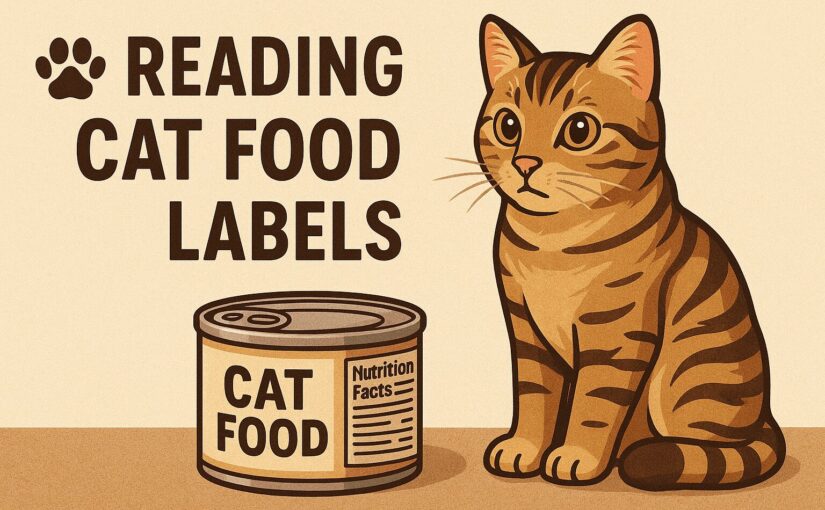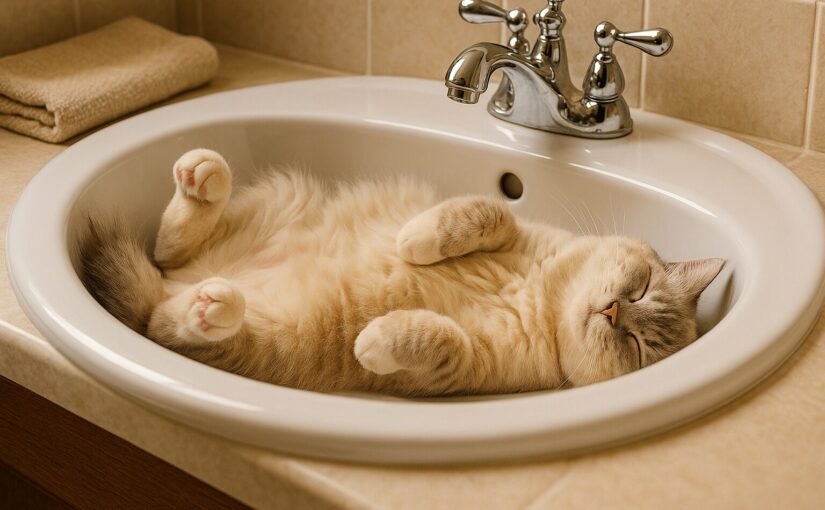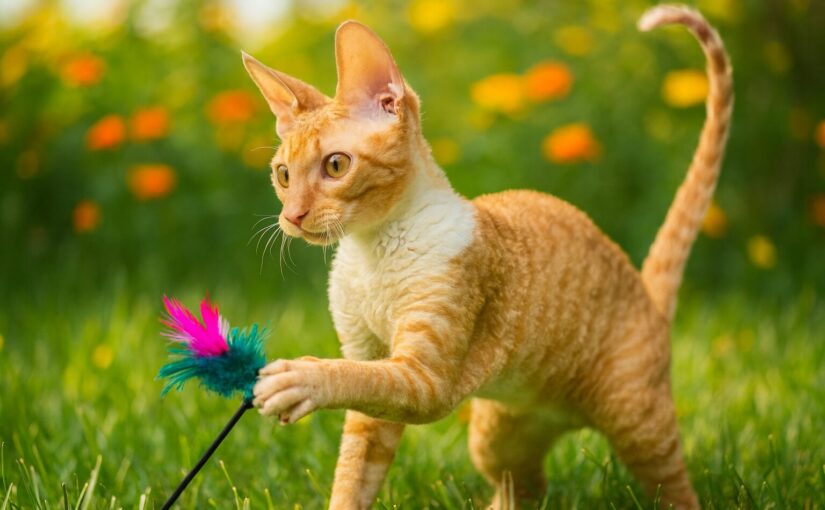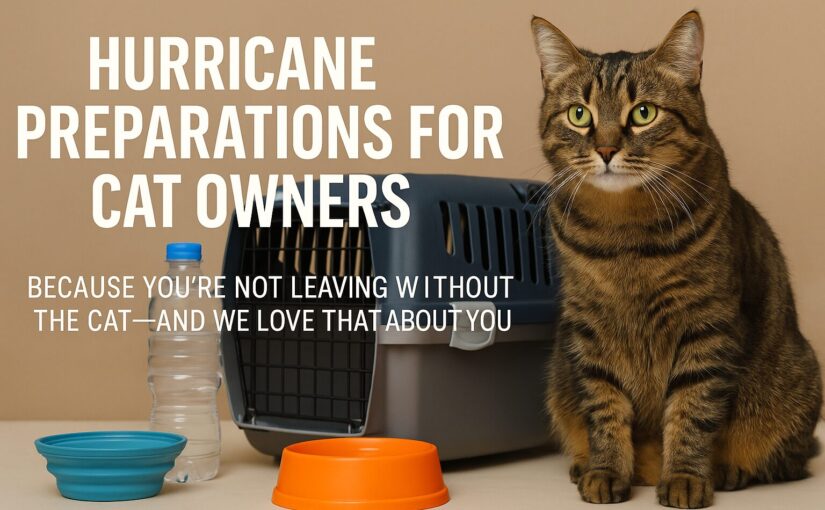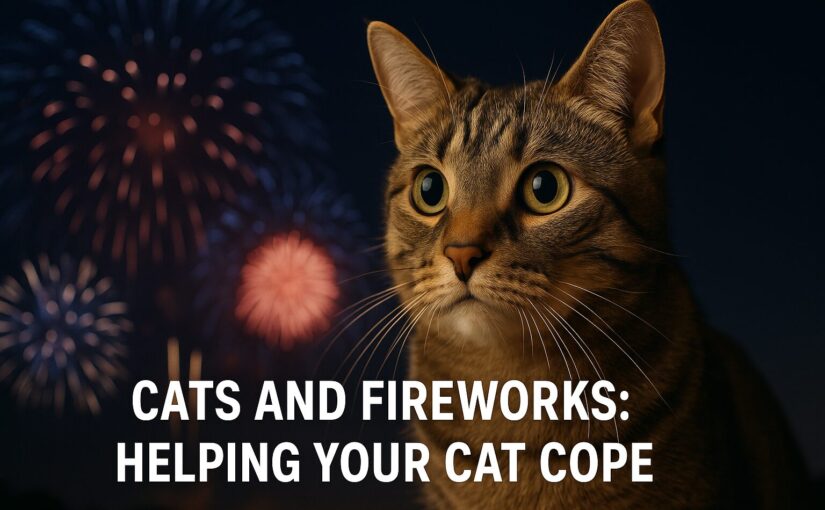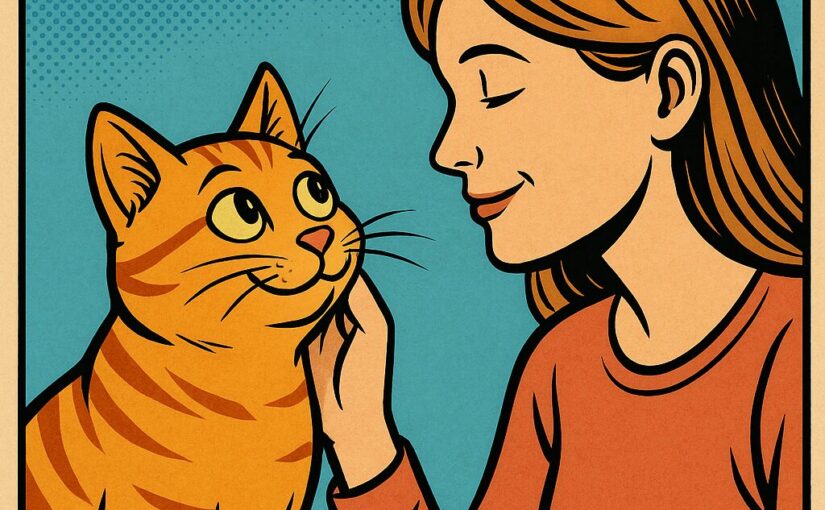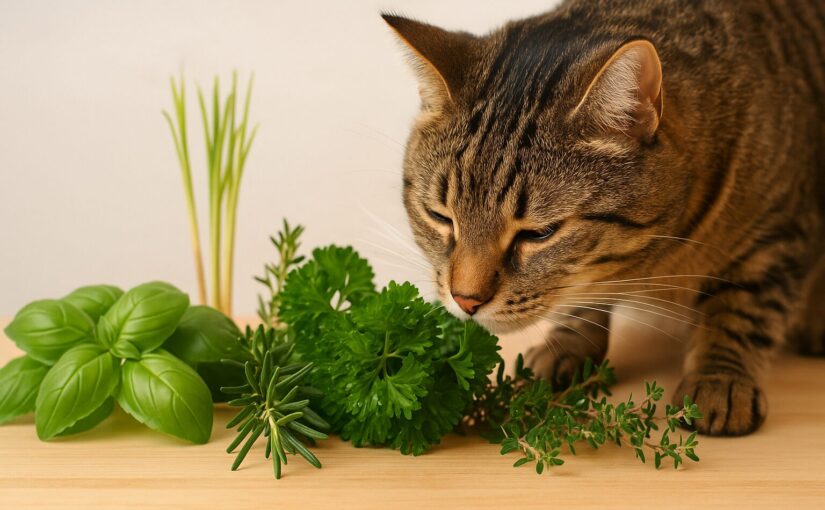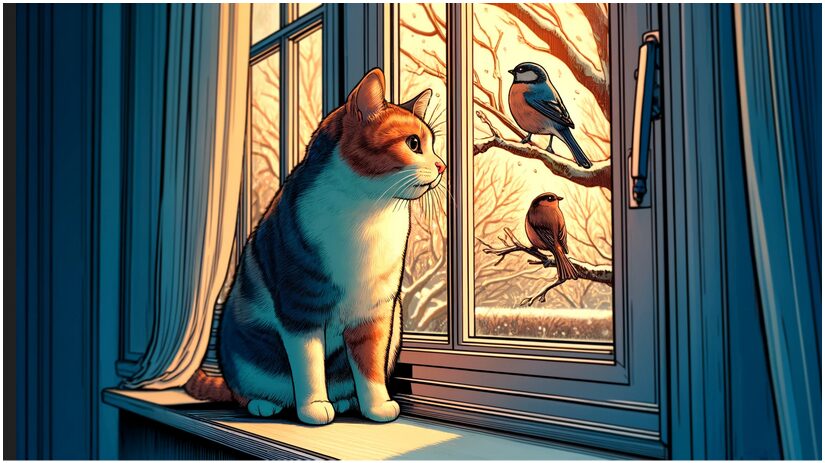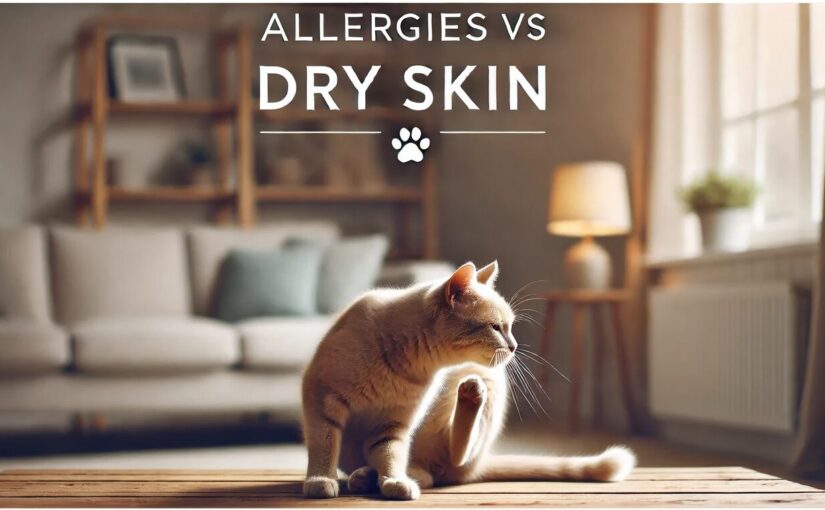How to Read Cat Food Labels (and Make Smart, Budget-Friendly Choices)
If you’ve ever stood in the pet food aisle feeling like you need a decoder ring to understand what’s actually in your cat’s food, you’re not alone. Cat food labels can be confusing — full of buzzwords, fine print, and nutritional jargon. But once you know what to look for, you can make confident, informed choices that support your cat’s health and your wallet.
Let’s walk through the label line by line and uncover how to get the best value without compromising on quality.
1. Start with the AAFCO Statement
The very first thing to look for on any cat food label is the AAFCO nutritional adequacy statement.
AAFCO (the Association of American Feed Control Officials) sets basic standards for pet food nutrition. If the package says something like:
“Formulated to meet the nutritional levels established by the AAFCO Cat Food Nutrient Profiles for adult maintenance”
—that means the food meets the minimum requirements for a complete and balanced diet for adult cats.
If it says “for all life stages” or “for growth and reproduction”, it’s richer in calories and nutrients — great for kittens or pregnant/nursing cats, but too rich for many adult cats long term.
✅ Budget tip: Avoid foods that don’t carry the AAFCO statement; they may be “treats” or “supplements” and not nutritionally complete.
2. Decode the Ingredients List
Ingredients are listed by weight, from most to least. But here’s the catch: ingredients with high water content (like “chicken” or “salmon”) weigh more than dry ingredients such as grains or meal powders — even if there’s less actual protein in them.
So, a food that lists “chicken” first might not be higher in protein than one that lists “chicken meal” first.
Here’s what to look for:
- 🐔 Named meats first: “Chicken,” “turkey,” or “salmon” are good. “Poultry,” “meat,” or “fish” (without specifics) are vague catch-alls.
- 🍗 Meal vs. by-product:
- Chicken meal is a concentrated protein powder — actually quite nutritious.
- By-products can vary from nutritious organ meats to less desirable parts.
- 🚫 Avoid fillers and vague ingredients: “Animal digest,” “meat flavoring,” or “corn gluten meal” add little nutritional value.
✅ Budget tip: Don’t shy away from “chicken meal” or “turkey meal.” They’re often more protein-dense — and more affordable — than fresh meat formulas.
3. Understand the Guaranteed Analysis
This section lists the minimum or maximum percentages of nutrients like protein, fat, fiber, and moisture.
Here’s what a typical label might show:
| Nutrient | Minimum/Maximum | Why It Matters |
|---|---|---|
| Crude Protein | 32% min | Essential for muscle and tissue health |
| Crude Fat | 15% min | Source of energy and fatty acids |
| Crude Fiber | 3% max | Aids digestion — too much can reduce nutrient absorption |
| Moisture | 10% max (dry food) | Affects actual nutrient density |
To compare dry vs. wet foods fairly, you can calculate the “dry matter basis” — but for everyday purposes, look for:
- ≥30% protein in dry food
- ≥8% protein in canned food (which has high moisture content)
✅ Budget tip: Store brands that list similar protein and fat ratios to premium brands often perform just as well for healthy adult cats. Check the analysis — not just the price tag.
4. Beware of Marketing Buzzwords
Labels love to use words like “natural,” “holistic,” “premium,” and “grain-free.”
Here’s what those really mean:
- Natural: Minimally processed, but preservatives like mixed tocopherols (vitamin E) are allowed.
- Grain-free: Doesn’t necessarily mean healthier — it might replace grains with peas, lentils, or potatoes, which aren’t always better.
- Human-grade: Must be made in a facility that meets human food standards (good, but pricier).
- No by-products: Sounds great, but removes organ meats that can be valuable sources of nutrition.
✅ Budget tip: Focus on nutrient content over marketing claims. A mid-range “complete and balanced” brand often outperforms pricey boutique foods with fancy packaging.
5. Check the Nutritional Purpose and Feeding Directions
Every label must specify who the food is for: kittens, adults, seniors, or “all life stages.” Feeding an “all life stages” formula to an older cat may lead to unnecessary weight gain.
Feeding guidelines are just starting points — your cat’s actual needs vary by age, activity level, and metabolism.
✅ Budget tip: Overfeeding wastes money and can harm your cat’s health. Measure portions carefully, and ask your vet what calorie range is right for your cat’s size.
6. Understand Additives and Preservatives
Look for natural preservatives such as:
- Mixed tocopherols (vitamin E)
- Ascorbic acid (vitamin C)
- Rosemary extract
Avoid artificial ones like BHA, BHT, or ethoxyquin, which are controversial and largely phased out of reputable brands.
✅ Budget tip: Many moderately priced foods now use natural preservatives — check the ingredient list instead of assuming you need to “go premium.”
7. Compare Price by Nutrient, Not by Bag Size
That $50 bag might not be as expensive as it looks if it’s more calorie-dense and lasts longer.
Use the cost-per-day method:
- Check feeding directions (cups per day).
- Multiply by your cat’s needs.
- Compare how many days the bag will last.
✅ Budget tip: Buying larger bags can lower cost per pound — but only if you can keep it fresh. Store in an airtight container in a cool, dry place.
8. Brands That Balance Quality and Affordability
While preferences and availability vary, some brands consistently perform well in independent reviews for nutritional quality and safety without breaking the bank:
- Purina ONE or Purina Pro Plan
- Iams Proactive Health
- Hill’s Science Diet (especially on sale or via autoship)
- Blue Buffalo Basics
- Sheba Perfect Portions (for wet food fans)
Always check for recall history and the AAFCO statement before switching.
9. When in Doubt, Ask Your Vet
Your veterinarian (or a veterinary nutritionist) can help interpret labels and recommend specific nutrient ranges for your cat’s needs — whether they’re overweight, senior, or managing a health condition.
If your cat needs a prescription diet, ask if there’s a nutritionally equivalent over-the-counter option for maintenance once the condition stabilizes.
Final Thoughts
Understanding cat food labels isn’t about memorizing every term — it’s about recognizing what truly matters:
✅ Complete and balanced nutrition
✅ High-quality protein sources
✅ Transparent ingredient lists
✅ Sensible feeding amounts
When you focus on these fundamentals, you can confidently choose a diet that fits both your cat’s health needs and your household budget.
After all, a healthy cat — and a happy wallet — are both worth purring about. 🐾
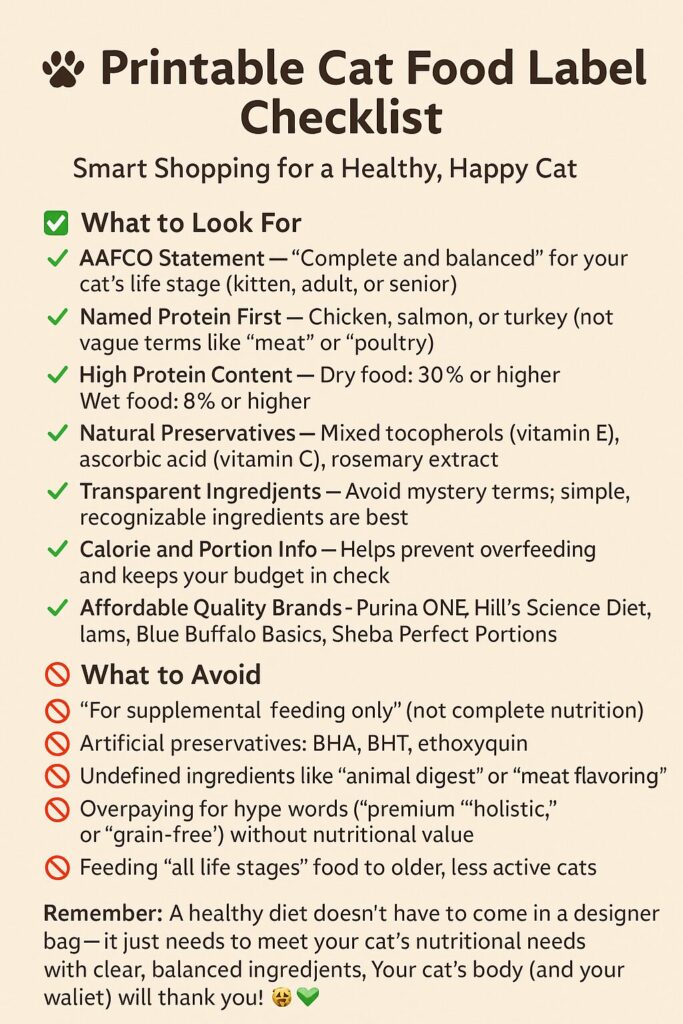
The Truth About Your Cat’s Favorite Sleeping Spot
Is your cat a sunbather, a cave dweller, or a box enthusiast? Let’s decode their sleeping spot secrets!
Cats are experts at sleeping—up to 16 hours a day, in fact! But have you ever noticed that your cat always gravitates to the same spot, whether it’s the laundry pile, a sunny windowsill, or your laptop keyboard? Believe it or not, that sleepy preference might reveal a lot about your cat’s personality.
So grab your coffee (or catnip), and get ready to play feline psychologist. This is part nap-time analysis, part personality quiz, and all fun. Let’s dive in.
1. The Windowsill Watcher
Typical Spot: Sunny ledge with a good view of the neighborhood.
Personality: Curious, confident, and a little bit nosey.
These cats love to keep an eye on the world. Whether it’s birds, squirrels, or just the neighbors coming and going, your windowsill watcher wants to be in the know. They’re likely the type of cat who’ll greet you at the door and chirp when something interesting is happening outside.
You might say: “My cat’s basically running a one-feline Neighborhood Watch.”
Sleeping Style: Loaf position or elegantly sprawled, tail twitching now and then.
2. The Undercover Agent
Typical Spot: Under the bed, in the closet, or burrowed under blankets.
Personality: Cautious, private, and possibly an introvert.
These cats like to feel safe and cozy. They might be new to your home, a little anxious, or just naturally reserved. Don’t take it personally—it doesn’t mean they don’t love you. It just means they recharge best in quiet, hidden places.
Sleeping Style: Curled tightly into a ball, completely camouflaged.
📝 Tip for Cat Parents: Make sure your home has safe hidey-holes that feel like sanctuaries, not just afterthoughts.
3. The Warmth Worshipper

Typical Spot: Radiators, heating vents, sunny patches on the floor, your laptop keyboard.
Personality: Sensualist, comfort-seeker, possibly dramatic.
These cats are all about the vibes. They want warmth, luxury, and a little bit of spotlight. They’re the cats who dramatically flop in sunbeams and then sigh like they’re on vacation.
You might say: “My cat is basically a living mood board.”
Sleeping Style: Belly-up or sprawling diagonally, totally surrendered to comfort.
4. The Box Enthusiast
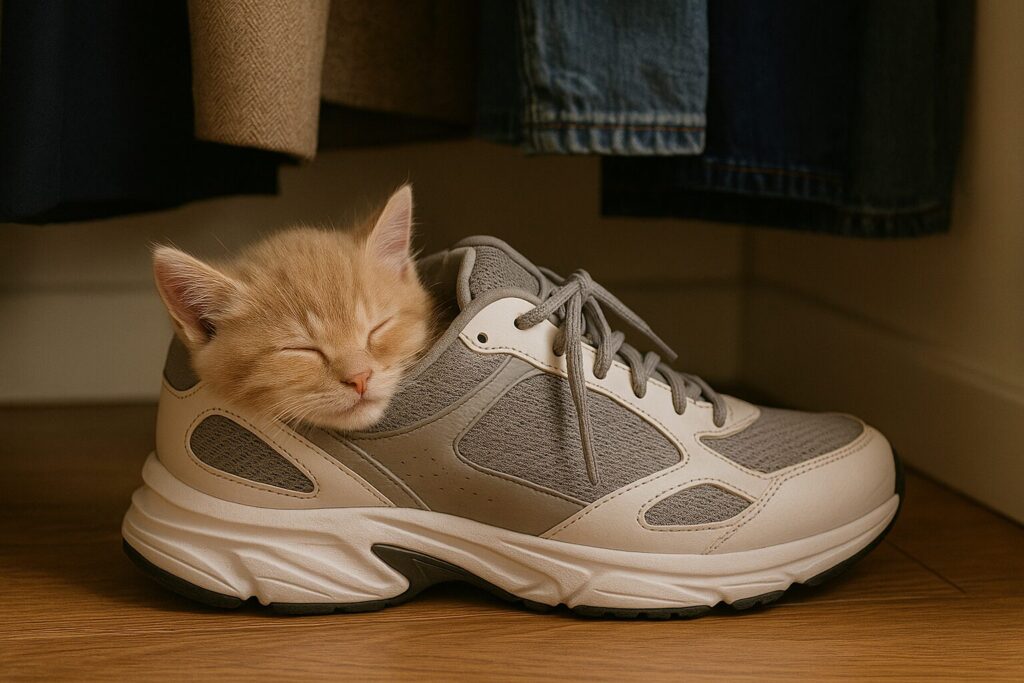
Typical Spot: Shoeboxes, Amazon boxes, laundry baskets, or anything with walls.
Personality: Quirky, playful, and slightly mysterious.
Cats love boxes because they offer both safety and sensory stimulation—but box lovers are on a different level. They’re the weirdos (in the best way), always climbing into spaces they barely fit. These cats are problem solvers, independent thinkers, and full of surprises.
Sleeping Style: Wedged in tight, sometimes upside down.
😻 Fun Fact: Studies show cats prefer boxes because they help regulate stress. So your cardboard-loving cat might be self-soothing like a pro!
5. The Human Blanket
Typical Spot: On your chest, head, lap, or curled around your feet.
Personality: Loyal, loving, and more dog-like than most cats.
These cats crave closeness and emotional connection. If your cat sleeps on you, it means they feel safe, secure, and deeply bonded. They’re probably the first to follow you to the bathroom, meow at the door, and snuggle when you’re sad.
Sleeping Style: Purring pile of affection.
🧠 Psych Insight: Cats transfer heat through contact, so this behavior is both loving and smart.
6. The Bed Hog
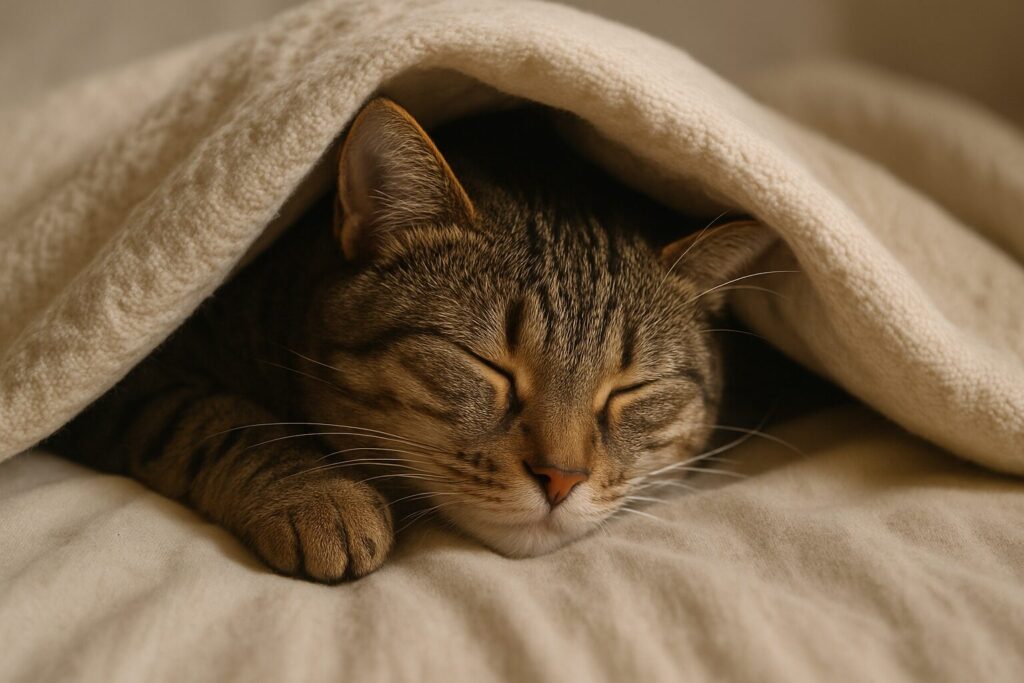
Typical Spot: Your pillow, the middle of the bed, or stretched across the whole mattress.
Personality: Confident, a little spoiled, and totally in charge.
Let’s be honest: you’re the guest in their bed. These cats are used to getting what they want and aren’t afraid to claim space. But don’t mistake them for selfish—they’re just self-assured, and they believe they deserve the very best. Which, of course, is true.
Sleeping Style: Limbs everywhere, sometimes pushing you off the bed.
7. The Nomad
Typical Spot: Changes daily—today the bookshelf, tomorrow the laundry basket, next week the bathtub.
Personality: Adventurous, unpredictable, and maybe a little eccentric.
These cats keep you on your toes. They don’t like routines and they definitely don’t like being boxed in (figuratively speaking). Expect spontaneous zoomies, surprise naps in weird places, and a general air of mystery.
Sleeping Style: Whatever fits the mood. Or doesn’t fit at all.
🧠 Catnap Decoder: What Does It All Mean?
Your cat’s favorite sleep spot can reveal:
- Their sense of safety (hidden spots = nervous or introverted)
- Their social bonds (on you = secure attachment)
- Their need for stimulation (window watchers and nomads)
- Their preferences for warmth or touch (radiators, laps)
And remember: just like people, cats can change. A formerly shy under-the-bed cat may one day become a lap cat. Their favorite sleeping spot is like a mood ring—fun to observe, and full of meaning.
Wrapping It Up With a Yawn
Whether your feline friend is a sun-loving sprawler or a closet-cuddled introvert, their sleep style is more than just a preference—it’s a peek into who they are.
Now if you’ll excuse us, we’re off to curl up in a metaphorical sunbeam ourselves.
The Cornish Rex: Everything You Need To Know
If you’ve ever met a Cornish Rex, you know they’re not your average cat. With their curly coats, oversized ears, and playful, almost puppy-like personalities, these cats are unforgettable. But looks are just the beginning—Cornish Rex cats are affectionate, people-loving companions who bring joy and energy into any home.
Let’s take a closer look at where the Cornish Rex came from, how long they usually live, the health quirks you’ll want to know about, which U.S. cat registries recognize them, and what kind of families or living situations are the best match.
Where Did the Cornish Rex Come From?
The Cornish Rex’s story starts in Cornwall, England, in 1950. A little kitten named Kallibunker was born with a soft, wavy coat that looked nothing like his siblings. That curly fur was the result of a natural genetic mutation—and breeders knew they’d stumbled onto something special.
With some careful breeding (using Burmese, Siamese, and British Shorthair cats along the way), the Cornish Rex became an official breed. The “Rex” part of the name actually comes from curly-coated rabbits that share the same genetic quirk.
How Long Do Cornish Rex Cats Live?
Most Cornish Rex cats live around 12 to 15 years, though many happily make it into their late teens. What makes them extra special is that they tend to keep their kitten-like playfulness for much of their lives. Even at 10 years old, you might find your Cornish Rex zooming through the house like a mischievous kitten.
Health Things to Keep in Mind
Cornish Rex cats are generally healthy, but every breed has its quirks. Here are a few to watch for:
- Hypertrophic Cardiomyopathy (HCM): A heart condition seen in many breeds. Responsible breeders often test for it.
- Patellar Luxation: This is when the kneecap slips out of place. Some cats show no symptoms at all, while others may need extra care.
- Dental Concerns: Their fine-boned jaws can mean extra attention to dental health. Regular vet cleanings are a must.
- Temperature Sensitivity: With such short, fine coats, Cornish Rex cats feel the cold quickly. They’re happiest in cozy indoor spaces and may even enjoy wearing a little cat sweater in winter.
Recognized by U.S. Cat Registries
The Cornish Rex is a well-loved breed with recognition from all the big names:
- Cat Fanciers’ Association (CFA): CFA Cornish Rex Breed Standard
- The International Cat Association (TICA): TICA Cornish Rex Breed Standard
- Cat Fanciers’ Federation (CFF)
- American Cat Fanciers Association (ACFA)
This means Cornish Rex cats are widely accepted in cat shows and breeding programs throughout the U.S.
Is a Cornish Rex Right for You?
Cornish Rex cats are lively, curious, and extremely people-oriented. They’re not the kind of cat who’s content to nap in a sunny window all day (though they do love sunbathing!). Instead, they want to be where the action is—preferably in your lap, on your shoulder, or chasing toys around the house.
A Perfect Match For:
- Families with kids: Cornish Rex cats love playtime and rarely tire of attention.
- Multi-pet households: They usually get along with other cats and even dogs.
- Homebodies: If you spend a lot of time at home, your Cornish Rex will happily keep you company.
- Warm and cozy homes: Drafts and chilly floors aren’t their favorite—blankets, heating pads, and sunshine are.
Probably Not the Best Fit If:
- You’re away from home most of the day—they can get lonely and bored.
- Your home is often chilly. Their delicate coats mean they need warmth and comfort.
Final Thoughts
The Cornish Rex isn’t just another pretty face with a curly coat. They’re affectionate, outgoing, and endlessly entertaining. If you want a cat who will play fetch, cuddle under the blankets, and make you laugh daily, the Cornish Rex could be your perfect match.
They may need a little extra care when it comes to warmth and dental health, but the love and fun they bring to a household is worth every bit of it.
So if you’re ready for a curly-coated companion with a big heart and even bigger ears, the Cornish Rex might just be the cat of your dreams.
Hurricane Preparations for Cat Owners: How To Stay Safe
Because You’re Not Leaving Without the Cat—and We Love That About You
Hurricane season rolls in every year like clockwork—June through November—and while it might not feel urgent when the skies are blue and the breeze is gentle, the truth is this: the time to prepare is before the storm clouds gather. And if you’re a cat owner, you’re not just prepping for yourself. You’re prepping for a little ball of fur who’s likely hiding in the laundry basket wondering what all the fuss is about.
Whether you’re new to the coast or you’ve been through more than one storm, having a hurricane plan that includes your cat isn’t just smart—it’s essential.
Hurricane Preparations Step One: Have a Plan That Includes Whiskers
Let’s start with the basics: you can’t leave your cat behind. Not if you evacuate. Not if you’re just “going to check something” and plan to come back. Cats can’t fend for themselves in a hurricane. It’s scary, dangerous, and confusing for them—and heartbreaking for you.
So, let’s talk about making a plan that includes your feline family member:
- Know your evacuation zone. You can look it up online with your county or city. If you’re told to evacuate, go early. Don’t wait until the last minute when roads are jammed and hotels are full.
- Find pet-friendly places in advance. Whether it’s a hotel along your route, a family member’s home, or an emergency shelter that allows pets, have a list ready. And check their policies—some hotels drop their “no pets” rules during disasters, but it’s always good to call ahead.
- Make sure your cat is microchipped. And just as importantly—make sure the chip is registered and your contact info is up to date. A collar with an ID tag can help too, but many cats wriggle out of those.
Hurricane Preparations Step Two: Pack a Cat “Go Bag”
Your cat might not need to pack her favorite sunbeam or the windowsill, but she will need a few essentials. Here’s what to stash in a carrier or sturdy bag so you’re ready to roll:
- 🥫 At least two weeks’ worth of food (canned and/or dry) and a collapsible food dish
- 💧 Bottled water and a travel water bowl
- 🚽 Litter box, scoop, and a supply of litter (lightweight or clumping is best for travel)
- 🧸 A familiar blanket or soft toy to ease anxiety
- 💊 Medications and a printed copy of your cat’s medical records
- 🖼️ A photo of your cat, and one of you with your cat—just in case you get separated
- 🐾 A sturdy, well-ventilated carrier with your contact info taped on in waterproof marker or inside a plastic sleeve
Keep this bag somewhere you can grab it quickly—don’t bury it in the back of the closet behind the holiday decorations.
Step Three: If You’re Riding Out the Storm at Home
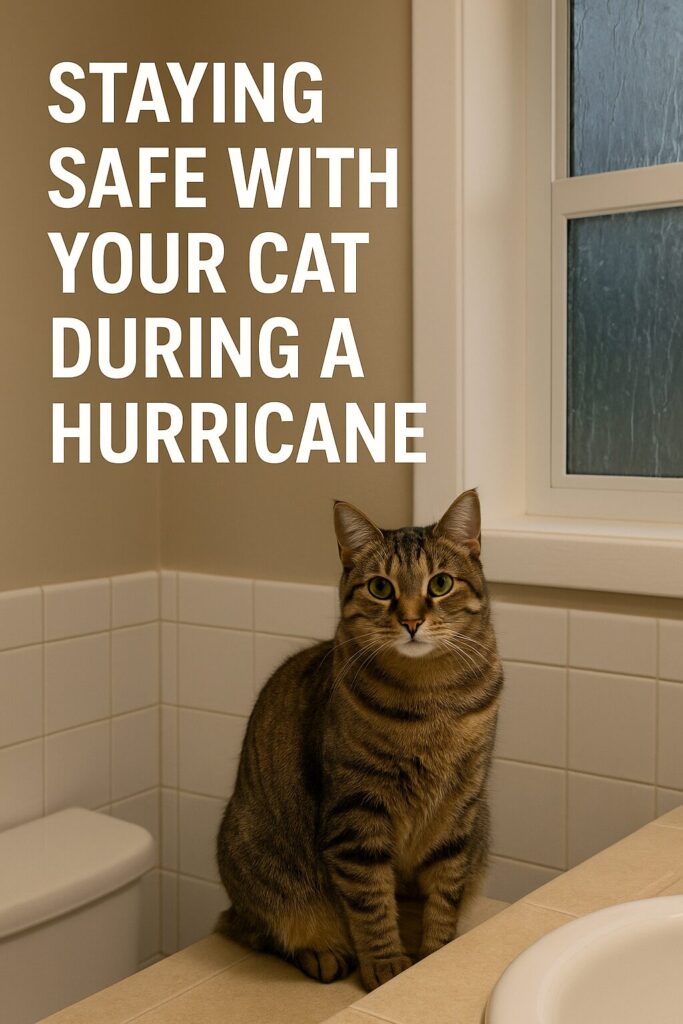
Not every storm means evacuation. If you plan to stay put, your goal is to create a safe, quiet, secure space for both you and your cat.
- Choose an interior room without windows—like a bathroom or large closet. Bring in food, water, litter, and bedding before the storm starts.
- Keep your cat indoors well before the weather turns. Storms can frighten even the most chill cats, and you don’t want to be searching for a hiding kitty when the winds pick up.
- Secure your home. Close windows, check for places where water might come in, and make sure dangerous items (cleaning supplies, heavy objects, sharp tools) are out of reach.
- Have a flashlight and battery-powered radio on hand in case the power goes out. A small battery fan can help if it gets stuffy.
If your cat is skittish, try lining the carrier with familiar bedding and leaving it open in the safe room. She may curl up in it voluntarily—which makes for a much easier time if you need to evacuate later.
Step Four: Hurricane Preparations for After the Storm Passes
It’s tempting to fling open the doors and breathe a sigh of relief—but hold off just a bit. The aftermath of a hurricane can be just as dangerous as the storm itself.
- Keep your cat indoors until you’ve checked the area for hazards—broken glass, downed power lines, displaced wildlife, or contaminated floodwater.
- If your cat got stressed or sick during the storm, watch for signs of illness or anxiety, like hiding, refusing food, vomiting, or bathroom issues. Don’t hesitate to contact your vet if something feels off.
- Restock your emergency kit. Replenish anything you used, and update your supplies if needed. This way you’re ready again without a scramble.
Final Thought: Your Cat is Counting on You
Disasters are hard. But planning ahead gives you power—even in the middle of chaos. And let’s be honest: our cats aren’t just pets. They’re family. They’re the soft nudge on your ankle when you’re stressed, the purring comfort in the dark, and the reason we keep spare boxes around the house even though we promised to recycle them.
Preparing for a hurricane isn’t fun. But knowing your cat is safe and accounted for? That’s worth every extra step.
Stay safe, stay dry, and hug your cat for us. 🐾
Everything You Need to Know About Cats and Fireworks
When the sky lights up with bursts of color and the sound of fireworks booms in the air, many of us marvel at the spectacle. But for our feline friends, fireworks can be a terrifying experience. If you’ve ever watched your cat dive under the bed or tremble in a corner during a celebration, you know cats and fireworks don’t mix!
In this post, we’ll explore why cats fear fireworks, how to prepare your home in advance, and what you can do to help your cat stay calm and safe during the festivities. Whether it’s the Fourth of July, New Year’s Eve, or a neighborhood celebration, these tips will help you support your cat through the noise.
Why Are Fireworks So Scary for Cats?
Cats have incredibly acute hearing—far more sensitive than humans. A sound that seems loud to us can be deafening to a cat. Here’s why cats and fireworks don’t mix well:
- 🔊 Unexpected loud noises: Fireworks don’t come with a warning. They explode without rhythm or pattern, making them all the more startling.
- 🌈 Flashes of light: The bright, sudden flashes can feel threatening or disorienting.
- 🧠 Stress and anxiety: Cats are creatures of habit. Unfamiliar sounds and sensations can cause anxiety, even triggering long-term fear responses.
Just like thunder or vacuum cleaners, fireworks can leave your cat feeling unsafe in their own home.
Signs Your Cat Is Stressed by Fireworks
It’s not always obvious when a cat is anxious, but here are some common signs:
- Hiding under furniture
- Trembling or cowering
- Excessive grooming
- Meowing or yowling
- Loss of appetite
- Trying to escape through doors or windows
- Litter box accidents
Recognizing these behaviors is the first step to helping your cat cope.
How to Prepare Before Fireworks Begin
You can do a lot to ease your cat’s stress by planning ahead. Here’s how to get your home—and your cat—ready for a night of fireworks:
🏠 Create a Safe Haven
Choose a quiet, interior room in your home where the noise will be muffled. Set it up with:
- A cozy cat bed or blanket
- Their favorite toys
- Water and a litter box
- Calming scents like lavender or catnip (in small, safe amounts)
Make sure this room is off-limits to guests or other pets during the event.
🎵 Use Background Noise
Playing soft music or white noise can help drown out the sound of fireworks. Classical music, nature sounds, or even a calming YouTube video for cats can work wonders.
🚪 Secure the Home
Close all windows and doors to reduce sound and prevent your cat from bolting if startled. Make sure your screens are secure—some cats will try to escape if they panic.
📅 Talk to Your Vet
If your cat has a history of extreme anxiety, consider asking your vet about anti-anxiety medication or pheromone diffusers like Feliway®. Start this conversation early—don’t wait until the day of the event.
During the Fireworks: What to Do in the Moment
Once the fireworks start, your job is to keep your cat as calm and secure as possible.
😌 Stay Calm Yourself
Cats pick up on our emotions. If you stay relaxed and speak in a calm, reassuring voice, your cat will sense that things are under control.
🐾 Let Them Hide
Don’t drag your cat out of hiding. If they feel safest under the bed or behind the couch, let them be. Just make sure they’re in a safe, secure area.
💕 Offer Gentle Reassurance
If your cat seeks you out, give them gentle petting or sit nearby quietly. Don’t overwhelm them with attention—just be a calm, comforting presence.
🍗 Offer a Distraction
A special treat or puzzle feeder can sometimes redirect your cat’s focus away from the noise.
After the Fireworks: Recovery and Comfort
Even after the last firework has faded, your cat might still be on edge. Here’s how to help them recover:
- Give them space if they need it
- Reinforce calm behavior with quiet affection or treats
- Keep your routine as normal as possible
- Monitor for lingering anxiety or behavior changes
If your cat seems especially shaken or develops a long-term fear, a behaviorist or veterinarian can help.
Long-Term Solutions for Cats and Fireworks Anxiety
If fireworks are a regular occurrence in your area, you might want to take extra steps to build your cat’s confidence over time:
- Desensitization Training: Play low-level recordings of fireworks during calm periods, slowly increasing the volume while rewarding your cat for staying relaxed.
- Positive Association: Associate mildly stressful sounds with something pleasant, like a treat or play session.
- Calming Products: Explore pheromone sprays, calming collars, or natural supplements like L-theanine (check with your vet first).
Conclusion: Helping Cats and Fireworks Coexist
Fireworks may be a part of human celebration, but for cats, they can be an ordeal. By preparing in advance, creating a calm environment, and offering gentle support, you can make a huge difference in how your cat experiences these noisy nights.
With a little planning and a lot of love, you and your feline friend can get through the fireworks together—safely and with a little less stress.
📌 Key Takeaways
- Cats and fireworks don’t mix due to loud noise and unpredictable light.
- Prepare a quiet, cozy retreat for your cat ahead of time.
- Use white noise, secure windows, and comfort techniques to help reduce stress.
- Talk to your vet about anti-anxiety options if needed.
- Stay calm and offer support without forcing interaction.
Do Cats Love Us—Or Just the Food?
😼 A Lighthearted Look at Feline Affection (and Maybe Manipulation)
Cats are mysterious creatures. One minute they’re purring in your lap, and the next they’re knocking your favorite mug off the table without a hint of remorse. It’s enough to make any cat owner wonder: Do cats really love their owners—or are they just sticking around for the kibble?
Let’s take a lighthearted (but surprisingly insightful) look at whether your feline friend is full of love… or just full of tuna.
The Myth of the Aloof Cat
Cats have a bit of a reputation. Unlike dogs, who practically burst with excitement every time you come home, cats tend to play it cool. This has led many people to assume that cats aren’t affectionate or that they’re emotionally distant.
But here’s the twist: that’s not entirely true.
Recent research suggests that cats can and do form strong bonds with their humans. In fact, studies from Oregon State University found that most cats show secure attachment to their caregivers, much like infants do with their parents. So yes, cats can love us—but they just show it in their own special way.
Food: The Great Motivator?
Let’s be honest—food plays a major role in your cat’s life. The sound of a can opening or the crinkle of a treat bag can summon a sleeping kitty from across the house in seconds. And if you’ve ever tried to sleep past breakfast time, you already know your cat’s internal clock is set to “feed me.”
So, is your cat following you from room to room because they adore you—or because you’re a mobile vending machine?
The truth is, it might be a little of both. Cats are clever, and they quickly learn who fills the food bowl. But affection and food motivation aren’t mutually exclusive. In fact, many cats express love by staying close to the person who cares for them—food included.
Signs Your Cat Actually Loves You
If you’re wondering whether your cat sees you as more than a food dispenser, here are some telltale signs of genuine feline affection:
1. Slow blinking
When your cat gives you a long, slow blink, it’s the kitty equivalent of a warm hug. Try slow-blinking back—it’s a great way to bond.
2. Following you around
If your cat follows you room to room (even when food isn’t involved), it’s a strong indicator they like your company.
3. Bringing you “gifts”
Okay, they might be dead bugs or a mangled toy, but in the feline world, this is love. Your cat is sharing their “catch” with someone they care about.
4. Head-butting or cheek rubbing
Cats have scent glands in their faces, and when they rub against you, they’re marking you as safe and familiar. That’s a big deal in cat language.
5. Sleeping on or near you
Cats are at their most vulnerable when sleeping, so if your cat chooses to snooze near you, it’s a major vote of trust.
Are Cats Capable of Manipulation?
Well… probably.
Cats are excellent at reading human cues. They learn what gets a reaction—whether it’s a meow, a paw to the face, or sitting directly on your keyboard. That doesn’t necessarily mean they don’t love you—it just means they’re smart enough to work the system.
Think of it this way: if a cat didn’t like you, it wouldn’t stick around at all. The fact that your cat chooses to be near you (when they could easily go elsewhere) says a lot.
So, Do Cats Get Attached to Humans?
Absolutely. Cats may not wag their tails or slobber all over you, but they form deep attachments in more subtle ways. They thrive on routine, comfort, and security—three things that a good human provides.
Even formerly feral cats, once socialized, often show strong affection to the people they learn to trust. The bond might look different from a dog’s exuberant loyalty, but it’s just as real.
Food + Love = The Full Cat Experience
In the end, it’s not either/or—it’s both. Cats love us and our food. After all, part of being a responsible pet parent is making sure your feline companion is well-fed and cared for. It’s only natural that food is a big part of the relationship.
But don’t let the begging or snack-stealing fool you—when your cat curls up beside you or headbutts your chin, that’s not just about the tuna. That’s love.
Final Thoughts
So, do cats love their owners? Yes.
Do they also love food? Oh, absolutely.
But that doesn’t make your relationship any less special. It just means your cat is practical—and possibly a tiny bit manipulative in the most charming way possible.
After all, isn’t that part of why we love them?
Let’s hear from you!
Does your cat act like a cuddlebug—or more like a snack-seeking missile? Share your funny feline stories in the comments below!
How To Provide Budget Friendly Enrichment With Cat Safe Herbs
Cats are curious creatures. Whether they’re leaping onto countertops, sniffing at your groceries, or investigating that new planter, their inquisitive noses are always on the move. In this post, I’ll show you how to use your cat’s natural instincts to provide hours of budget friendly enrichment with cat safe herbs you probably already have in your kitchen or garden.
Not all herbs are safe for cats. But luckily, there are several kitchen herbs that are both safe and beneficial for cats to sniff and nibble. Even better? These herbs can be used to provide sensory enrichment that helps keep your cat happy, stimulated, and relaxed. We’ll explore which herbs are feline-friendly, how to offer them to your cat, and creative ways to use them to enrich your cat’s environment.
Why Herb-Based Enrichment?
Cats experience the world through their senses. Incorporating cat safe herbs into their routine engages their sense of smell and taste, mimics behaviors they might have in nature, and encourages positive interaction with their environment.
Benefits include:
- Mental stimulation
- Reduced boredom and stress
- Opportunities for safe chewing and foraging
- A more natural, enriched home environment
Common Kitchen Cat Safe Herbs
Let’s take a closer look at some herbs that are generally considered safe for cats. Remember: moderation is key, and every cat is different. Start small and observe your cat’s reaction.
1. Catnip (Nepeta cataria)
Let’s start with the superstar. Catnip is famous for its ability to make cats roll, drool, zoom, and purr in delight. While not every cat is affected (about 30% feel nothing at all), for those who are sensitive, catnip can be an instant mood-lifter.
Enrichment Ideas:
- Dry some leaves and stuff them in a toy.
- Sprinkle a bit on a scratching post.
- Grow a pot indoors for fresh access.
2. Valerian Root (Valeriana officinalis)
Valerian root can have a similar effect to catnip, though its scent is stronger and more musky. Some cats go bonkers for it!
Enrichment Ideas:
- Place a pinch of dried root inside a sock or toy.
- Mix a bit into a foraging box.
3. Lemongrass (Cymbopogon citratus)
In small amounts, lemongrass is safe and often enjoyed by cats for its scent and texture. However, too much can cause stomach upset.
Enrichment Ideas:
- Place a lemongrass plant on a high shelf within sniffing (not chewing) range.
- Rub a leaf lightly on a favorite toy to transfer the scent.
4. Thyme (Thymus vulgaris)
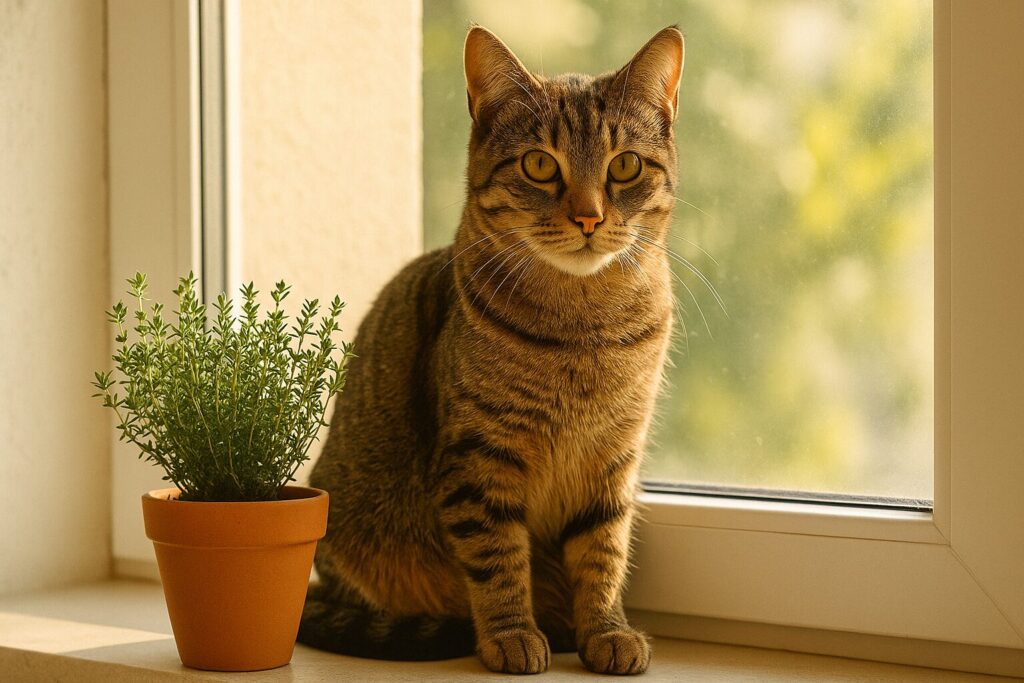
Regular garden thyme (not wild thyme or Spanish thyme) is non-toxic to cats and has a savory, appealing aroma. Some cats love to rub against it or gently chew on the leaves.
Enrichment Ideas:
- Add a few sprigs to a cardboard box for a sniffable hideout.
- Let your cat graze from a thyme plant in a sunny window.
5. Basil (Ocimum basilicum)
While it may not send your cat into a frenzy like catnip, basil is perfectly safe for cats to nibble on. The scent alone can be stimulating.
Enrichment Ideas:
- Offer a fresh leaf for sniffing during grooming time.
- Place basil near a perch or window seat for gentle ambient aroma.
6. Parsley (Petroselinum crispum)
Parsley is a great source of vitamins and is safe in small quantities. Cats might nibble it for the fresh flavor or simply for fun.
Enrichment Ideas:
- Mix chopped parsley into your cat’s treat ball.
- Freeze chopped parsley with water into ice cubes for summer play.
7. Rosemary (Rosmarinus officinalis)
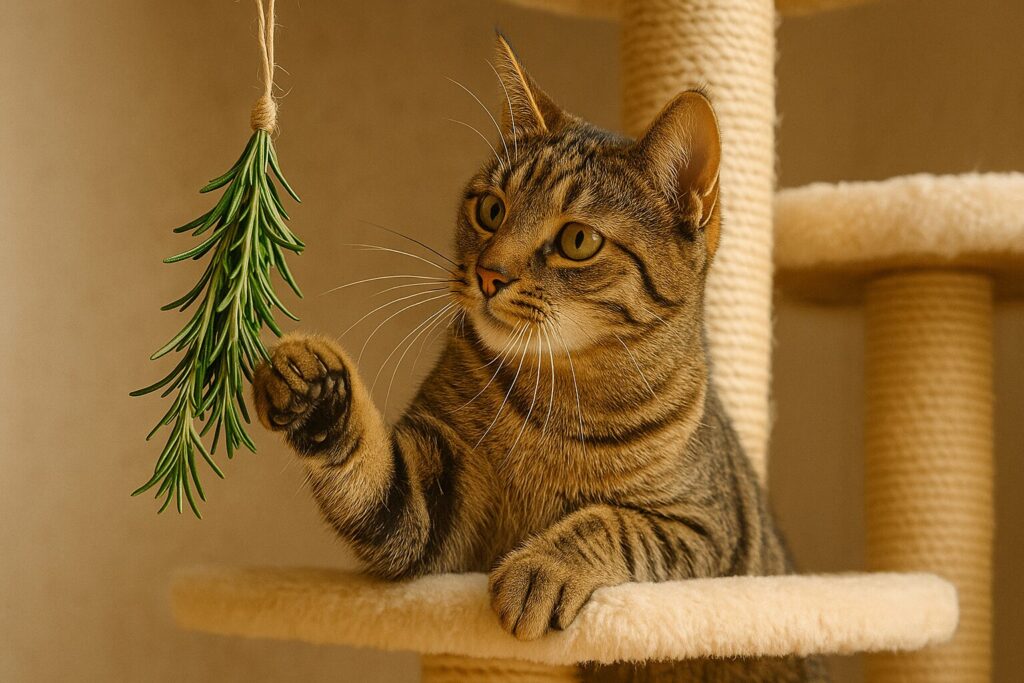
While not all cats enjoy rosemary’s piney scent, it is non-toxic and some cats find it interesting to sniff or paw at.
Enrichment Ideas:
- Hang a bundle in a cat-safe room for scent-based enrichment.
- Add a rosemary sprig to your cat’s favorite napping area to introduce new smells.
How to Offer Herbs Safely
Here are some general tips to keep enrichment safe and enjoyable:
- Supervise the first few interactions. Make sure your cat doesn’t overindulge or have a negative reaction.
- Offer herbs fresh or dried. Avoid essential oils—they’re too concentrated and may be toxic.
- Use untreated, pesticide-free plants. Organic is best if you’re buying from a store or nursery.
- Rotate herbs weekly. Novelty keeps your cat engaged and prevents boredom.
- Grow a cat-friendly herb garden. A sunny kitchen windowsill or a secure balcony space can be the perfect spot.
Warning: Not Cat Safe Herbs to Avoid
For safety, steer clear of these herbs which are toxic to cats:
- Oregano
- Mint (especially pennyroyal)
- Chives
- Garlic
- Onions
- Bay leaves
- Tarragon
- Sage (in large quantities)
When in doubt, check the ASPCA’s list of toxic and non-toxic plants or consult your veterinarian.
Final Thoughts: A Herb-Filled Life for Your Feline
Introducing cat safe herbs to your cat’s world is a simple, natural way to boost their happiness and provide much-needed sensory stimulation. Whether it’s the thrill of a catnip chase or the calming aroma of thyme by the window, herbs add variety and joy to your cat’s daily life.
So next time you’re chopping parsley, or pruning your basil or other cat safe herbs, set a sprig aside for your feline friend. With a bit of creativity and care, your kitchen garden might become your cat’s favorite playground.
Do you use herbs to enrich your cat’s life? Got a favorite sniff-worthy suggestion or a hilarious catnip story? Share it in the comments below! We’d love to hear from you.
The Bird Flu in Cats: How to Keep Your Cat Safe
Avian influenza, commonly known as the bird flu, has recently made headlines for its ability to jump from birds to other animals, including cats. While bird flu primarily affects poultry and wild birds, rare cases in domestic cats have raised concerns for pet owners. Understanding the risks, symptoms, and preventive measures can help you keep your feline friend safe.
What Is Bird Flu?
Bird flu is caused by influenza A viruses, with various strains affecting different animal species. The most concerning strains for humans and pets include:
- H5N1: Highly pathogenic, known for severe illness in birds and occasional transmission to humans and mammals, including cats.
- H7N9: Another strain with potential to infect mammals, though less commonly reported in cats.
Cats can become infected by ingesting raw or undercooked poultry or by coming into contact with infected birds. While transmission from cats to humans is rare, the virus’s ability to mutate means vigilance is crucial.
How Do Cats Get Bird Flu?
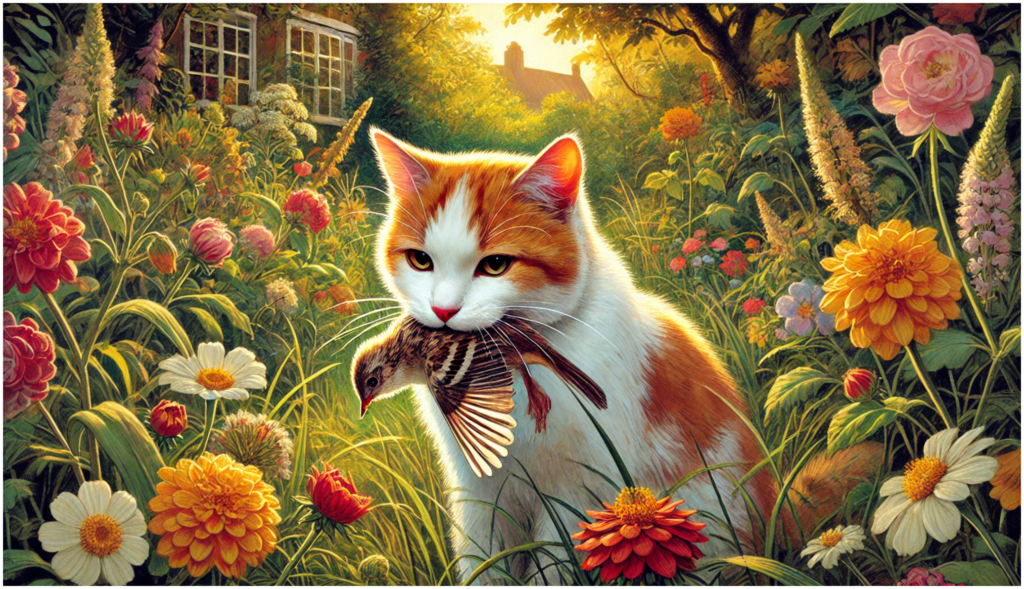
Cats can contract bird flu through:
- Eating infected birds: Outdoor cats that hunt wild birds are at higher risk.
- Exposure to infected poultry: Cats living near farms or in households with backyard chickens may be exposed.
- Contact with contaminated surfaces: The virus can survive on surfaces like bird feeders, water bowls, or shoes.
Symptoms of Bird Flu in Cats
Bird flu symptoms in cats can range from mild to severe, including:
- Fever
- Lethargy
- Loss of appetite
- Difficulty breathing
- Coughing or sneezing
- Eye or nose discharge
- Neurological signs such as seizures or lack of coordination (in severe cases)
If your cat exhibits these symptoms, seek veterinary care immediately. Early detection and supportive care can improve their chances of recovery.
Can Bird Flu Spread from Cats to Humans?
While rare, scientists have documented isolated cases of bird flu transmission from animals to humans. However, no widespread cases of cat-to-human transmission have been confirmed. The main concern is that the virus could mutate, making it more infectious among mammals.
How to Keep Your Cat Safe from Bird Flu
Preventing bird flu in cats is primarily about reducing exposure. Here are key steps to protect your pet:
1. Keep Your Cat Indoors
The best way to reduce risk is to prevent contact with wild birds and their droppings. Indoor cats are much less likely to encounter infected birds or contaminated areas.
2. Avoid Feeding Raw Poultry
If you prepare homemade meals for your cat, ensure that all meat is fully cooked. Raw poultry can carry not only bird flu but also bacteria like salmonella.
3. Minimize Contact with Wild Birds
- Remove bird feeders or place them out of your cat’s reach.
- Clean outdoor water sources frequently.
- Avoid bringing home injured or dead birds, as they could be infected.
4. Practice Good Hygiene
If you work with poultry or have been in areas with wild birds, change clothes and wash your hands before handling your cat.
5. Monitor Symptoms and Seek Veterinary Care
If your cat displays any flu-like symptoms, contact your vet promptly. While there is no specific treatment for bird flu in cats, supportive care can help manage symptoms.
6. Stay Informed on Local Outbreaks
Monitor news reports and public health advisories about avian flu outbreaks in your area. If cases are rising, take extra precautions to protect your cat.
What to Do If Your Cat Is Exposed to Bird Flu
If you suspect your cat has been exposed:
- Isolate them from other pets.
- Contact your veterinarian immediately.
- Avoid handling your cat’s saliva, litter, or bedding without gloves.
- Clean and disinfect surfaces in your home.
Final Thoughts
While the risk of bird flu in cats remains low, it’s essential for pet owners to be aware of the potential danger. By keeping your cat indoors, avoiding raw poultry, and practicing good hygiene, you can significantly reduce their risk of infection. Stay informed, be proactive, and keep your feline companion safe.
Top Cat Allergies: What You Need To Know
Cats are fascinating creatures, but like humans, they can suffer from allergies. Identifying the signs of allergies and distinguishing them from issues like dry skin is crucial for ensuring your feline companion’s comfort and health. Here’s what you need to know about the top cat allergies, their symptoms, and how to tell if your cat’s issue is more than just dry skin.
What Are Cat Allergies?
Allergies in cats occur when their immune system overreacts to a substance it perceives as harmful. These substances, called allergens, can come from various sources, including food, the environment, and parasites. While allergies aren’t curable, they can be managed effectively with proper care.
Common Types of Cat Allergies
1. Food Allergies
Food allergies are one of the most common causes of allergic reactions in cats. They often stem from proteins in the diet, such as chicken, beef, fish, or dairy. Cats can develop food allergies at any age, even to foods they’ve eaten for years.
Symptoms:
- Itchy skin, often around the face, ears, and neck
- Gastrointestinal issues like vomiting or diarrhea
- Excessive grooming
- Hair loss or bald spots
2. Environmental Allergies (Atopic Dermatitis)
Environmental allergens include pollen, mold, dust mites, and even certain cleaning products. Seasonal allergies, similar to hay fever in humans, can also affect cats.
Symptoms:
- Frequent sneezing or coughing
- Watery or red eyes
- Itchy skin, especially around the paws and ears
- Scabs or open sores from scratching
3. Flea Allergy Dermatitis
Cats allergic to flea saliva can have severe reactions to even a single flea bite. Flea allergy dermatitis is one of the most common allergic conditions in cats.
Symptoms:
- Intense itching, particularly around the base of the tail
- Red, inflamed skin
- Small scabs or crusty lesions (often called “flea dirt”)
- Hair loss in affected areas
4. Contact Allergies
Contact allergies occur when a cat’s skin comes into direct contact with an allergen, such as certain fabrics, chemicals, or plants.
Symptoms:
- Localized redness or irritation
- Persistent scratching at the affected area
- Swelling or hives
Dry Skin: A Common Misdiagnosis
Dry skin in cats can mimic some allergy symptoms, making it easy to confuse the two. Dry skin may occur due to:
- Low humidity
- Poor diet lacking essential fatty acids
- Overbathing
- Medical conditions like hypothyroidism
Symptoms of Dry Skin:
- Flaky, dandruff-like appearance
- Dull or coarse fur
- Mild itchiness without sores or redness
- Skin that feels rough to the touch
How to Tell the Difference Between Allergies and Dry Skin
Understanding whether your cat is dealing with allergies or dry skin involves observing their behavior and symptoms closely. Here are key differences:
1. Severity and Location of Itchiness
- Allergies: Itchiness is often intense and localized, such as around the face, paws, or tail.
- Dry Skin: Itchiness tends to be mild and more generalized.
2. Presence of Lesions or Redness
- Allergies: Look for red, inflamed areas, scabs, or open sores caused by excessive scratching.
- Dry Skin: Flaking and dull fur are more common without visible inflammation.
3. Other Symptoms
- Allergies: Cats with allergies often have accompanying symptoms like sneezing, watery eyes, or gastrointestinal upset.
- Dry Skin: Typically limited to skin and fur issues without systemic signs.
4. Response to Environmental Changes
- Allergies: Symptoms may worsen seasonally or when exposed to specific triggers.
- Dry Skin: May improve with adjustments like adding a humidifier or dietary supplements.
Diagnosis and Treatment
If you’re unsure whether your cat is suffering from allergies or dry skin, it’s best to consult a veterinarian. They may recommend:
- Skin Scraping or Allergy Testing: To identify specific allergens.
- Food Trials: To determine food sensitivities.
- Flea Prevention: To rule out flea allergy dermatitis.
Treatment Options
- For Allergies:
- Antihistamines or corticosteroids for immediate relief.
- Immunotherapy for long-term management.
- Prescription diets for food allergies.
- For Dry Skin:
- Omega-3 fatty acid supplements to improve skin health.
- Regular grooming to distribute natural oils.
- Using gentle, hypoallergenic shampoos.
Final Thoughts
Caring for a cat with allergies or dry skin requires patience and attention to detail. By observing your cat’s symptoms and working closely with your vet, you can ensure they stay comfortable and happy. Remember, small changes in your cat’s environment or diet can make a big difference in their overall well-being.

